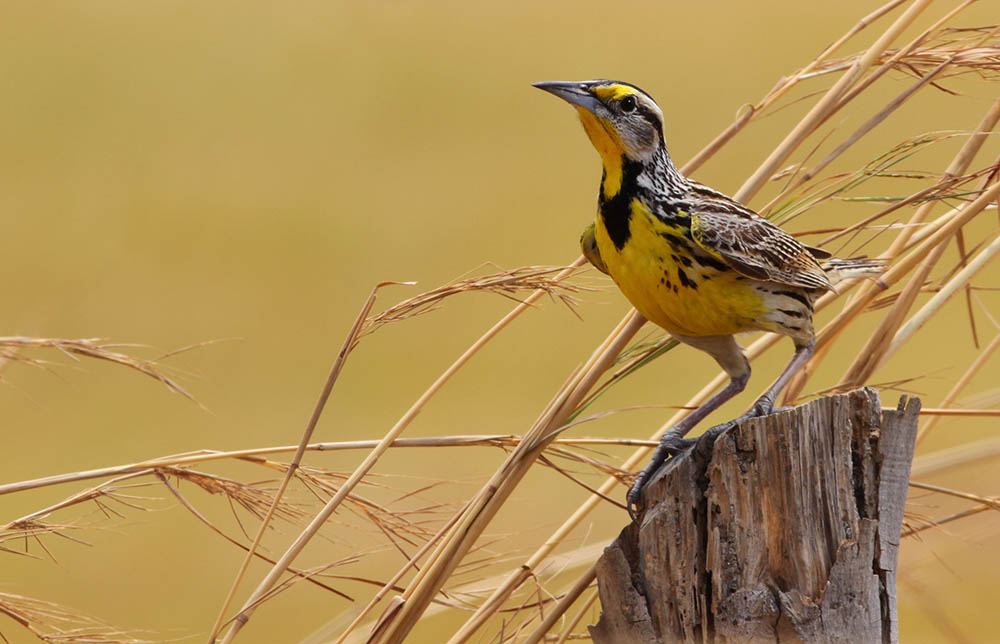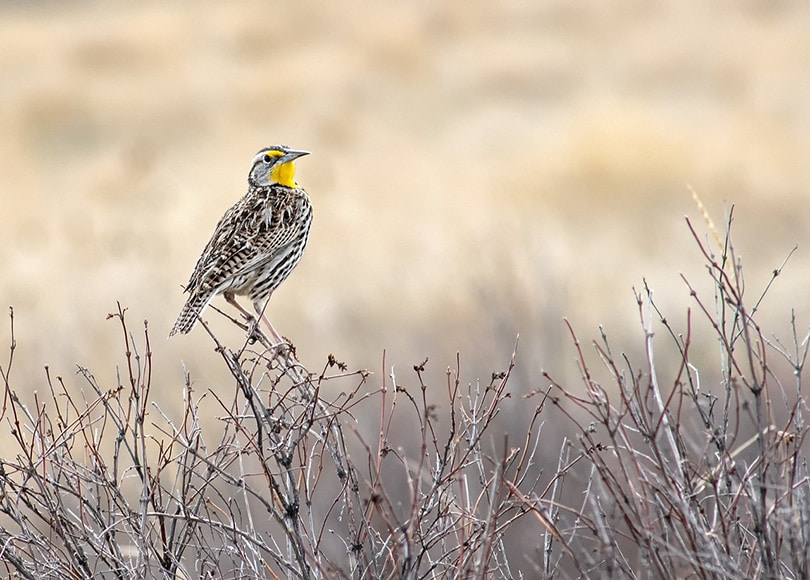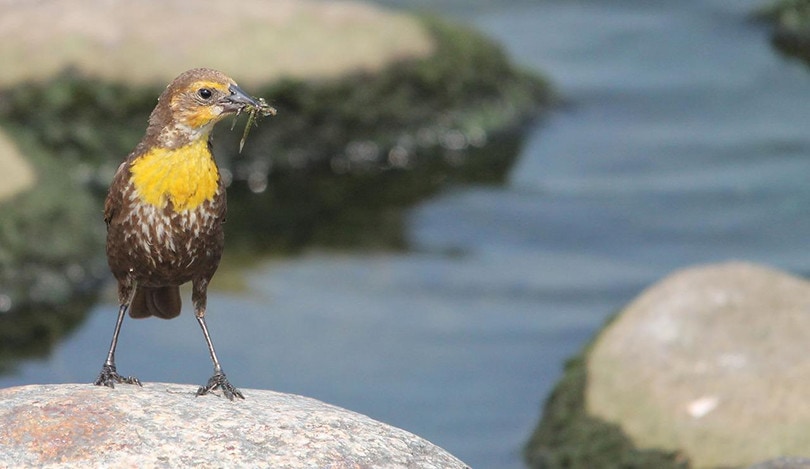What Is Kansas’ State Bird? How Was It Decided?
Last Updated on

You probably imagine the Wizard of Oz, tornadoes, or the great open prairie when you think of Kansas. It is likely that the last thing people think about is birds. Interestingly enough, Kansas has over 225 bird species in the state alone. One of those birds is the amazing state bird called the Western Meadowlark.
The Western Meadowlark perfectly embodies the warm grasslands of Kansas. In this post, we’re chatting about the Western Meadowlark and how it came to be the state bird of Kansas. Let’s dive in!

When Was the Kansas State Bird Adopted?
The Western Meadowlark became the Kansas state bird on January 29th, 1925, when the Kansas Audubon Society organized an election to choose the bird that best represented the state.
This election allowed thousands of schoolchildren across Kansas to vote on their choice for the state bird. The Western Meadowlark won with a resounding 125,000 votes. However, it was not until 1937 that the Kansas Legislature made it official.
Since then, the Western Meadowlark has represented not just Kansas but the entire Midwest. Many states have fallen in love with this beautiful bird. In fact, Montana, Nebraska, North Dakota, Wyoming, and Oregon have also made the Western Meadowlark their state bird.

The Western Meadowlark: Behavior and Traits
| Length: | 6.5–10 inches |
| Weight: | 3.1–4.1 ounces |
| Wingspan: | 16 inches |
| Colors: | Yellow, black, tan, gray, white |
The Western Meadowlark (Sturnella neglecta) is a medium-sized bird with a flat head, slender bill, and chunky body. This cheery bird has a black and gray beak with tan and black spotted feathers. The most striking feature of this beautiful bird is its bright yellow feathers, stretching from the breast down to its legs, with a black V-shaped band swooping down from the neck.
The Western Meadowlark looks similar to an Eastern Meadowlark, so people often confuse these two birds. It’s difficult to tell the two birds apart from afar. The biggest difference is how they vocalize.
You’ll never hear a Western Meadowlark sing at night, but their flute-like whistle can be heard near shrubs and trees during the day. Some people even think they sound like R2D2 from Star Wars.
If you do hear a Western Meadowlark, odds are it’s a male, depending on the time of year. Male Western Meadowlarks like to establish their territory before the females arrive for mating season. The males sing to the heavens, hoping to attract a couple of females.
Why Was the Western Meadowlark Chosen?
Selecting the state bird wasn’t as easy as it sounds since Kansas has so many remarkable bird species to choose from. By just looking at the Western Meadowlark or listening to its beautiful voice, it wouldn’t surprise you why children were enthralled by this bird.
The bright yellow coloring on the birds’ front matches the warm yellow petals found on magnificent sunflowers. Kansas is known as the sunflower state, so a bird to match makes sense.

Where Can You Find the Western Meadowlark?
Western Meadowlarks prefer to stay near open land with a few shrubs and trees. This is where they find food and lay their eggs, similar to how geese lay eggs. You won’t find them in forests where the vegetation is dense.
It’s unlikely you’ll see a Western Meadowlark in the middle of a city, but you may see them foraging on weedy parts of the road or in large parks and nature centers. Your best chance at finding one is to search for one in open grasslands with grasses that are low to medium in height. If you find a Western Meadowlark nest, it’s imperative not to approach it. Western Meadowlarks are notorious for abandoning their nests if a predator or threat approaches.
Sadly, many bird species are declining, including the Western Meadowlark. Since 1970, about 53% of the bird populations have vanished, making it challenging to spot a Western Meadowlark, but it’s not too late to do something about it. Planting native plants and trees is a great way to contribute to rebuilding bird populations. 
Conclusion
Kansas truly is an ideal residence for the Western Meadowlark and many other birds, for that matter. There’s lots of open sky and rolling hills, so it makes sense that hundreds of bird species call Kansas home. The Western Meadowlark is a beautiful bird that thrives here, and all you have to do is wake up with the sun to listen to their beautiful calls.
See also:
Featured Image Credit: Gualberto Becerra, Shutterstock
About the Author Cassidy Sutton
Cassidy is a vet tech and pet sitter who has more recently become a animal writer. She loves cats and dogs and has had dozens of pets over the years. Her specialty is the human-animal bond. Cassidy and her husband currently live in Kansas with a German Shepherd named Raven, two cats named Lucy and Streudel, and several backyard chickens.
Related Articles:
What Is the Best Binocular Magnification for Hunting? Optical Features Explained
10 Types of Hummingbirds in Arkansas (With Pictures)
8 Types of Hummingbirds in Nebraska (With Pictures)
5 Types of Hummingbirds in Idaho (With Pictures)
3 Types of Hummingbirds in Mississippi (With Pictures)
8 Types of Hummingbirds in Kansas (With Pictures)
5 Types of Hummingbirds in West Virginia (With Pictures)
5 Types of Hummingbirds in Ohio (With Pictures)
